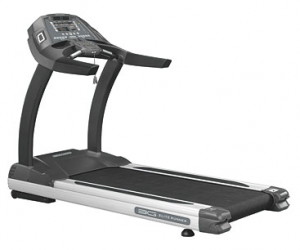11 Aug What is an orthopedic treadmill belt?

The 3G Cardio Elite Runner Treadmill has an upgraded, commercial Ortho Flex Shock™ suspension system to provide plenty of cushion over the powerful motor in the privacy of your own home.
If you’ve spent much time shopping for or researching treadmills, you’ve probably heard of an orthopedic treadmill belt.
It sounds good, but if you’re like me you probably had several questions form in your mind. Questions like these:
- What is an orthopedic treadmill belt?
- What does an orthopedic treadmill belt actually do?
- Do orthopedic treadmill belts actually work?
I found my answers after talking to several experts and sampling several machines in the specialty fitness industry.
First, let’s start with a brief history of the orthopedic treadmill belt.
The concept of an orthopedic treadmill belt is that it’s a thicker belt, which will cushion the impact when the foot strikes and will reduce some of the shock.
They were actually first marketed as part of informercials for cheap $300-500 treadmills. The manufacturers placed their “cheapie” model next to a high-end, $6,000 treadmill and had a gleeful fitness model drop an egg on both treadmills.
Guess which egg didn’t crack open? Of course, it was the cheaper model with an orthopedic treadmill belt.
Obviously, the cheap treadmills were a joke to run on and a big part of the shock absorption of any treadmill is the suspension system under the belt.
However, these first mentions of an orthopedic treadmill belt did create an interest and consumers began asking questions about them.
Soon, cheap department store brands were marketing them, although once again the overall shock absorption and suspension was no comparison to high-end treadmills.
Think about it, even if you have the best running shoes it’s going to be hard on your feet and legs to run on concrete.
Manufacturers of high-end treadmills shied away from producing machines with orthopedic treadmill belts until the last few years because the heavier belts made it tougher on the motors. The extra thickness generated more heat on the motor.
However, the technology now exists to allow orthopedic treadmill belts to “breathe” and the heat to be dissipated on a high-end treadmill.
One of the few companies to finally give fitness enthusiasts the best of both worlds — orthopedic treadmill belt and high-end treadmill — is 3G Cardio which is carried by At Home Fitness.
The 3G Cardio Elite Runner Treadmill retails for $3,999 and has a DC 4.0 hp motor, 22×62 belt size, max user weight 400 lbs and assembled weight of 386 pounds. This is a high-end treadmill, which is about half the price of comparable commercial and elite treadmills.
This 3G Cardio Elite Runner Treadmill has an upgraded, commercial Ortho Flex Shock™ suspension system to provide plenty of cushion over the powerful motor in the privacy of your own home.
The 3G Cardio Pro Runner Treadmill ($2,499) also has the Ortho Flex Shock™ suspension system.
Try out the new 3G Cardio Elite Runner Treadmill and Pro Runner Treadmill at any of the At Home Fitness stores in Arizona or shop online and www.athomefitness.com.
At Home Fitness consultant Aaron Dorksen’s blog deals with a variety of fitness topics, ranging from workout tips, motivational ideas and feature stories on how exercise impacts people’s lives. E-mail him with comments, questions or ideas for future blogs at aaron@athomefitness.com

